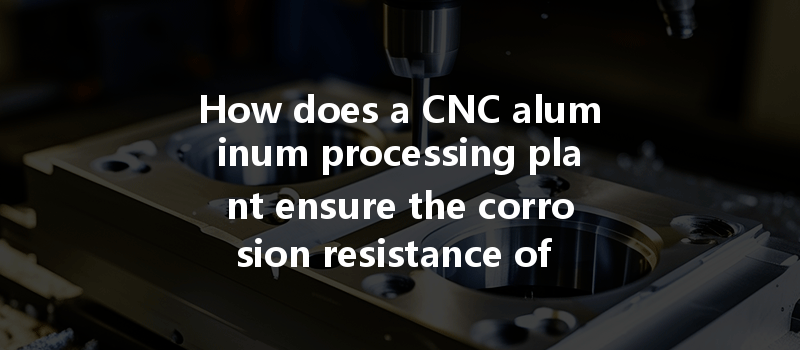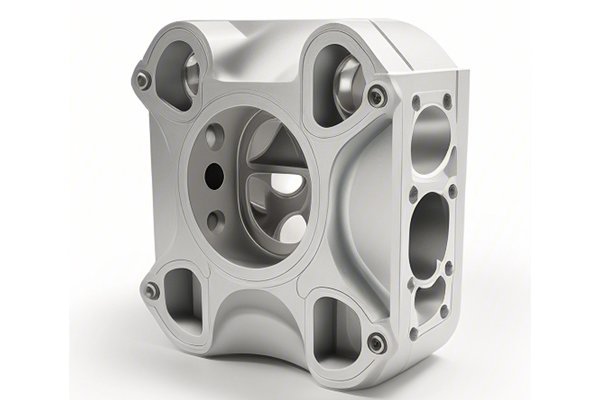An Engaging Start: Did You Know?
Did you know that aluminum is the second most abundant metal on Earth, making up about 8% of the Earth’s solid surface? Despite its prevalence, aluminum is not invulnerable. In its raw form, it is susceptible to corrosion, which can lead to significant challenges across various industries. This is particularly critical for manufacturers and engineers working with aluminum components in environments where corrosion can undermine structural integrity and lower the lifespan of the product. This raises an essential question: How does a CNC aluminum processing plant ensure the corrosion resistance of aluminum parts during production?
In this blog, we will delve deeper into this vital topic by exploring the factors that influence aluminum’s corrosion resistance, the techniques used in CNC machining, surface treatments, and quality control measures necessary for ensuring that aluminum components stand the test of time.
Understanding Corrosion and Its Impact on Aluminum
Before we dive into the various methods employed by CNC processing plants, let’s take a closer look at what corrosion is and why it poses such a significant risk to aluminum parts.
What is Corrosion?
Corrosion is a natural process that deteriorates metals due to chemical reactions with their environment. For aluminum, this often involves oxidation when it comes into contact with oxygen and moisture. While aluminum forms a protective oxide layer that can help resist corrosion, factors such as prolonged exposure to saltwater, acidic or alkaline conditions, or pollutants can compromise this protection.
The Impact of Corrosion on Aluminum Parts
When aluminum components are used in applications like automotive, aerospace, or marine environments, corrosion can result in:
Understanding these implications highlights the importance of adopting effective measures to enhance corrosion resistance in aluminum parts.
How CNC Aluminum Processing Plants Combat Corrosion
CNC (Computer Numerical Control) machining offers precision and efficiency in the production of aluminum components. However, ensuring the longevity and performance of these parts in corrosive environments requires a proactive approach. Below are some of the critical strategies employed in CNC aluminum processing plants:
The choice of aluminum alloy is the first line of defense against corrosion. Different alloys have varying resistance levels. For example, the 2000 series is known for its strength but is more susceptible to corrosion, whereas the 5000 and 6000 series alloys offer better resistance due to their higher magnesium and silicon content. CNC machining facilities often base their alloy selection on the end application’s specific requirements, weighing factors like strength, weight, and susceptibility to corrosion.
The quality of the surface finish can significantly affect a part’s vulnerability to corrosion. CNC machining techniques that result in smoother surfaces minimize crevices where moisture can gather and promote corrosion. Some advanced methods include:
Post-processing treatments can significantly improve aluminum’s resistance to corrosion. Various techniques employed in CNC machining facilities include:

3.1 Anodizing
Anodizing increases the thickness of the natural oxide layer on aluminum components, providing enhanced protection against corrosion. This process involves an electrolytic passivation that turns the aluminum surface into a robust oxide layer. Anodized parts not only resist corrosion better but can also be dyed for aesthetic purposes.
3.2 Painting and Coating
Applying paint or specialized coatings forms a barrier between the aluminum surface and the environment. It’s crucial that the coating is applied correctly to ensure complete coverage and adhesion. Commonly used coatings include:
3.3 Heat Treatment
Heat treatment can improve both the mechanical properties and corrosion resistance of aluminum alloys. This process often involves solution heat treatment followed by aging, which reinforces the aluminum structure and creates a tougher surface that is less prone to corrosion.
Ensuring that aluminum parts maintain their corrosion resistance throughout their lifecycle requires stringent quality control measures. CNC processing plants usually implement a variety of checks and balances to ensure the quality of raw materials and finished products.
4.1 Regular Testing
Regular testing is performed on both raw aluminum and finished components to assess their corrosion resistance. Testing methods might include:
4.2 Inspection and Verification
Visual inspections and precise measurements of the surface finish, followed by advanced quality checks, ensure that each aluminum part meets or exceeds industry standards for corrosion resistance.
Training staff on best practices for handling and machining aluminum materials is vital. This includes understanding the importance of environmental factors, proper cleaning protocols, and techniques to avoid damaging protective coatings.
: The Importance of Corrosion Resistance in CNC Machined Aluminum Parts
Ensuring that aluminum parts produced in CNC processing plants have adequate corrosion resistance is not merely a matter of manufacturing convenience; it is essential for the longevity, safety, and performance of these critical components. By selecting appropriate alloys, utilizing advanced machining techniques, applying effective post-processing treatments, implementing rigorous quality control measures, and fostering a culture of awareness among employees, CNC processing plants can significantly mitigate the risks associated with corrosion.
In summarizing the strategies outlined above, it is clear that a multifaceted approach is required to tackle the challenges posed by corrosion, emphasizing that a one-size-fits-all solution does not exist.
So, as professionals in the field of CNC machining, it is essential to prioritize corrosion resistance not only to meet the immediate demands of production but also to safeguard investments and uphold safety standards. This fundamental understanding and continuous improvement in techniques will not only enhance product quality but also reinforce the integrity of industries relying on aluminum components. With aluminum’s widespread applications, acknowledging the potential pitfalls of corrosion can help us make informed choices that lead to better outcomes for businesses, consumers, and the environment alike.
Remember, when aluminum meets cutting-edge machining technology backed by conscientious practices, it doesn’t just produce parts; it crafts solutions that withstand the test of time.






